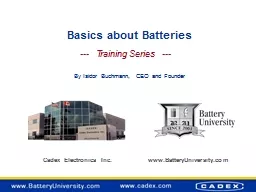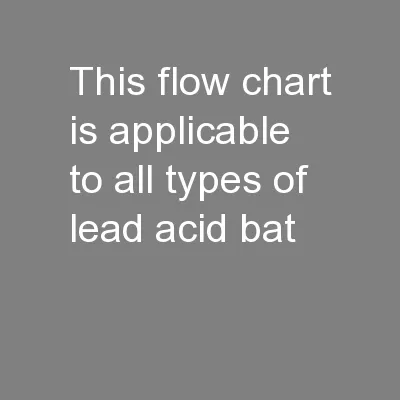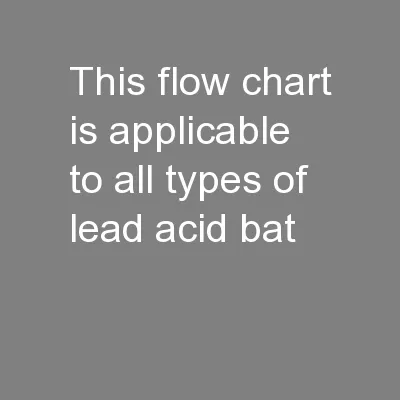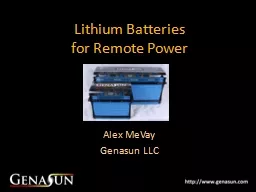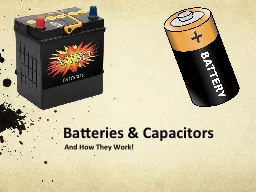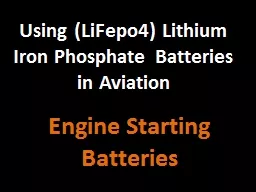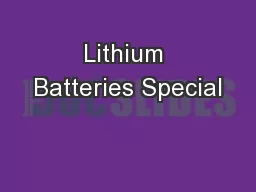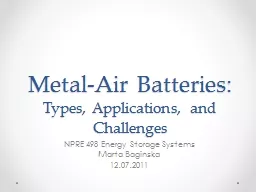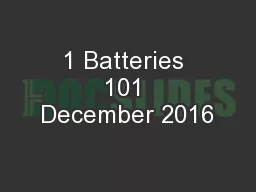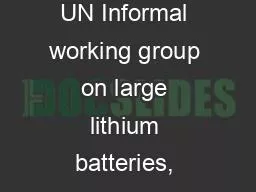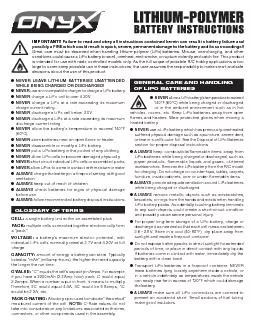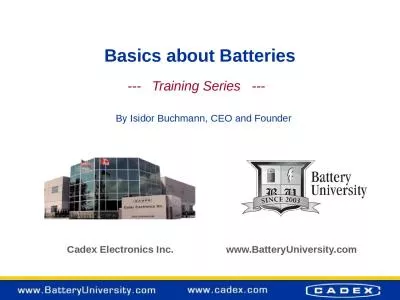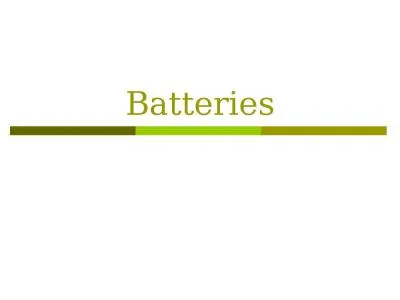PPT-Basics about Batteries
Author : giovanna-bartolotta | Published Date : 2015-10-25
Cadex Electronics Inc wwwBatteryUniversitycom Training Series By Isidor Buchmann CEO and Founder Outline Battery chemistries Packaging and Configurations
Presentation Embed Code
Download Presentation
Download Presentation The PPT/PDF document "Basics about Batteries" is the property of its rightful owner. Permission is granted to download and print the materials on this website for personal, non-commercial use only, and to display it on your personal computer provided you do not modify the materials and that you retain all copyright notices contained in the materials. By downloading content from our website, you accept the terms of this agreement.
Basics about Batteries: Transcript
Download Rules Of Document
"Basics about Batteries"The content belongs to its owner. You may download and print it for personal use, without modification, and keep all copyright notices. By downloading, you agree to these terms.
Related Documents

